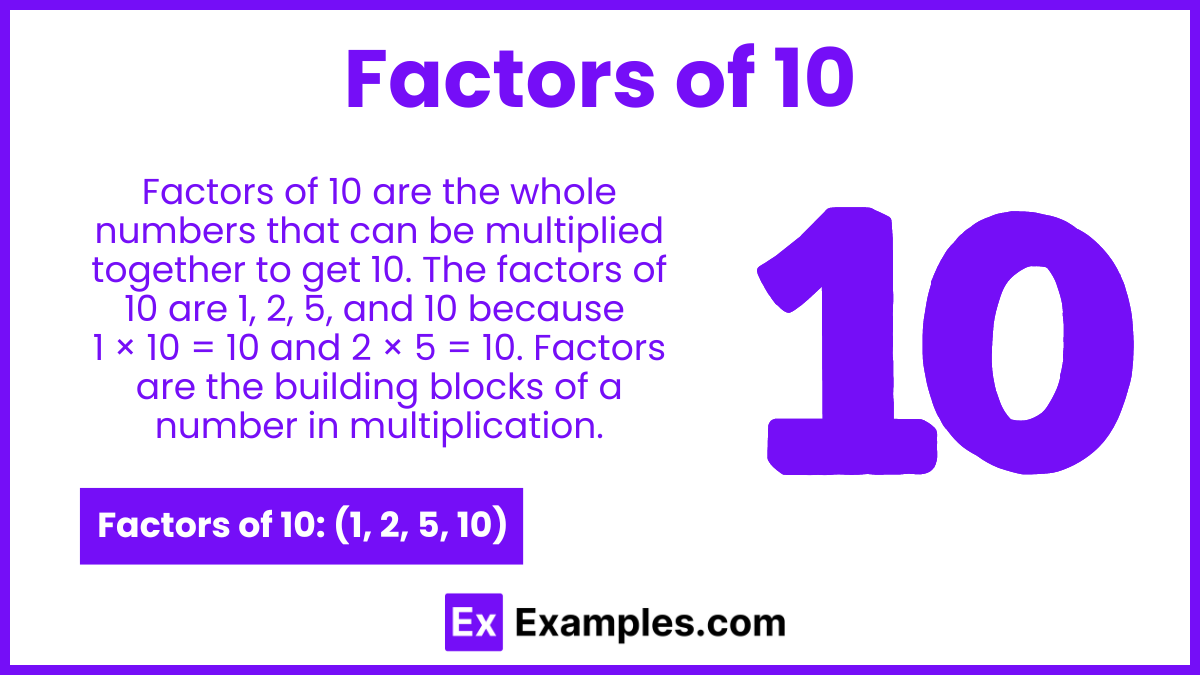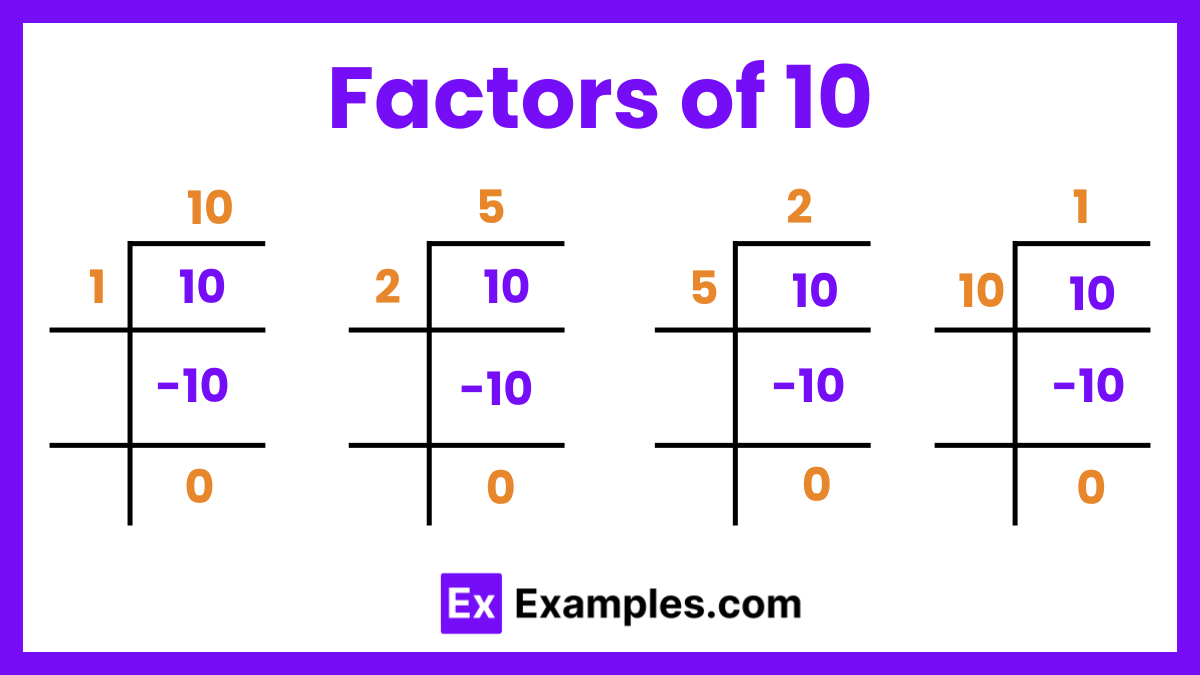What are the factors of 10?
1, 2, 5, 10
1, 2, 4, 10
2, 5, 10
1, 5, 10

The factors of 10 is crucial in mathematics. Factors are integers that divide another number without leaving a remainder. For 10, the factors are 1, 2, 5, and 10, derived from the pairs 1 x 10 and 2 x 5. Identifying factors aids in simplifying fractions, solving algebraic equations, and various mathematical applications. This comprehensive guide will delve into the factors of 10, offering detailed explanations and practical examples. Whether you are a student or an educator, mastering this concept is essential for advancing mathematical skills and solving problems efficiently.

The factors of 10 are 1, 2, 5, and 10. These numbers multiply in pairs (1 x 10 and 2 x 5) to produce 10. Understanding factors is vital for simplifying fractions, solving equations, and various mathematical operations. It helps in identifying number relationships and enhances problem-solving skills. Recognizing these factors allows students to tackle mathematical challenges more effectively and builds a solid foundation in number theory.
1 and 10: The pair 1 x 10 equals 10.
2 and 5: The pair 2 x 5 equals 10.
These pairs multiply to form the number 10.
Each pair includes a factor that divides 10 evenly.
Understanding these pairs helps in simplifying mathematical problems.
Calculating the prime factors of a number involves breaking it down into the set of prime numbers that multiply together to give the original number. Prime factors are the building blocks of a number. In this guide, we will explain the step-by-step process to find the prime factors of 10, ensuring a clear understanding of this fundamental mathematical concept.
Understanding the factors of 10 is essential for various mathematical tasks, including simplifying fractions, solving equations, and identifying number relationships. Here are some useful tips to help you master the concept of factors, specifically focusing on the factors of 10.
The prime factorization of 10 is 2 x 5. These are the prime numbers that multiply together to give 10.
Yes, 1 and the number itself are always factors of any number. In the case of 10, both 1 and 10 are factors.
When simplifying fractions, the factors of 10 can help identify common factors in the numerator and denominator, making it easier to reduce the fraction to its simplest form.
Yes, negative numbers can also be factors of 10. For example, -1, -2, -5, and -10 are factors because they multiply to give 10 when paired appropriately (-1 x -10 = 10 and -2 x -5 = 10).
The factors of 10 include both even and odd numbers. In this case, 2 and 10 are even factors, while 1 and 5 are odd factors.
When simplifying fractions, the factors of 10 can help identify common factors in the numerator and denominator, making it easier to reduce the fraction to its simplest form.
The multiples of 10 include 10, 20, 30, 40, 50, and so on. These numbers are obtained by multiplying 10 by integers.
The factors of 10 are 1, 2, 5, and 10. Their sum is 1 + 2 + 5 + 10 = 18.
Text prompt
Add Tone
10 Examples of Public speaking
20 Examples of Gas lighting
What are the factors of 10?
1, 2, 5, 10
1, 2, 4, 10
2, 5, 10
1, 5, 10
Which of the following pairs are factors of 10?
1 and 9
2 and 5
3 and 7
4 and 5
What is the largest factor of 10?
1
2
5
10
What is the smallest factor of 10?
1
2
5
10
Which of these numbers is not a factor of 10?
1
2
3
5
How many factors does the number 10 have?
2
3
4
5
Which factor pair of 10 includes only prime numbers?
1 and 10
2 and 5
1 and 5
2 and 10
Which of the following is a factor of both 10 and 15?
1
2
3
5
What are the common factors of 10 and 20?
1 and 2
2 and 5
1, 2, and 5
1, 2, 5, and 10
Which number is both a factor and a multiple of 10?
2
5
10
20
Before you leave, take our quick quiz to enhance your learning!

